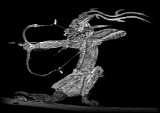
Asian Traditional Archery Research Network (ATARN)
Photographs/Illustrations © Stephen Selby, Hong Kong, 2004.
A1, Cloudridge,
30, Plunkett’s Road,
The Peak, Hong Kong.
Fax: (852) 2808-2887
email: srselby@atarn.org
March 2004
Dear All,
Chapchal in Yili, Xinjiang, is home to several thousand of the Xibe nationality. The Xibe were a branch of the Manchus, and the present inhabitants of Chapchal are descended from a Manchu banner who were ordered by the Emperor Qianlong to defend China's western borders.
Today's Xibe in Chapchal are the only remaining Manchus who still speak and write their language. Chapchal has its own, Manchu language newspaper and radio broadcasting station. The Xibe are renowned as archers and every provincial archery team in China seems to have some Xibe among their members; yet they have completely forgotten their traditional archery skills and now only practice western-style archery.

Xibe Archer, c. 1970.
This year, Chapchal Xibe Autonomous County will celebrate its 50th anniversary. At their request, ATARN is donating US$1,300 to purchase reproductions of traditional Manchu bows from Ju Yuan Hao, and I have been invited to hold a two-day traditional archery training course there. They will demonstrate traditional archery together with many other traditional arts at the celebrations from 29 - 31 August 2004. The Xibe have been authorized by the Central Government to start teaching traditional archery as part of the primary school syllabus.
Please let me know if you would like to contribute towards this ATARN sponsorship. (I have already paid the full amount.) And I am sure that any ATARN Members who want to go to Chapchal to join in the celebrations would be welcome.
I have come across three interesting items that can throw some light on archery equipment and techniques in previous ages in China.
|
|
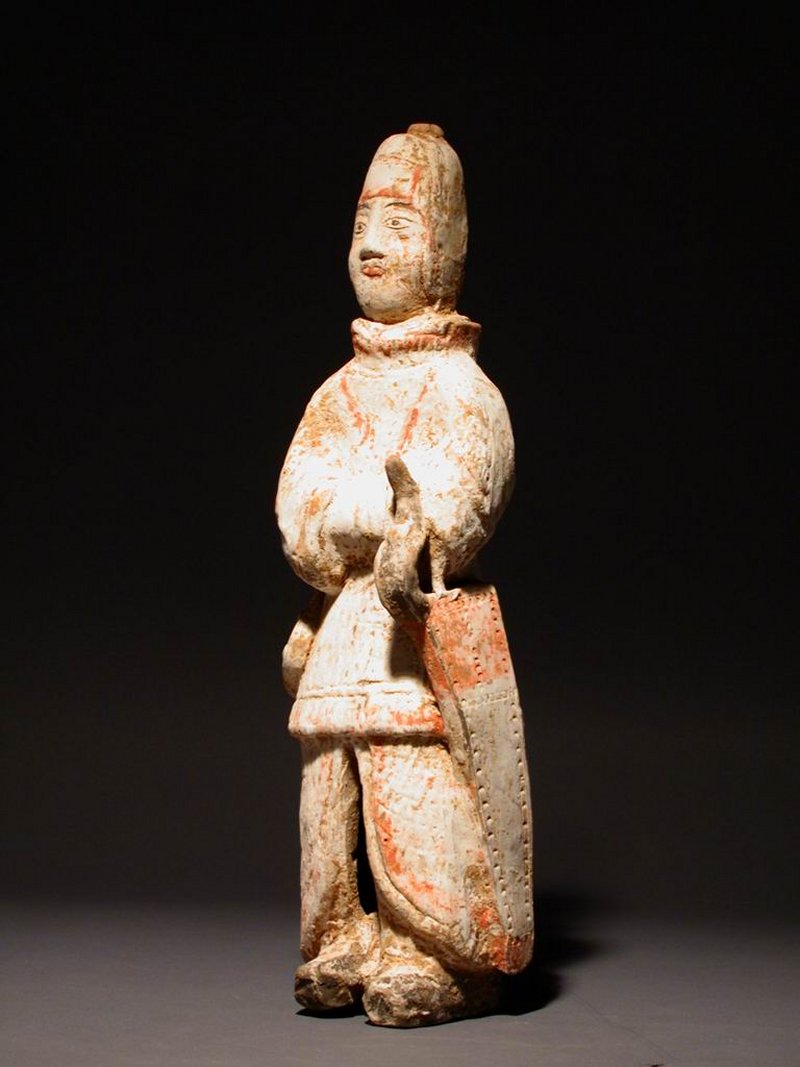 |
Photographs courtesy of Dragon Arts, Hong Kong © Dragon Arts , Hong Kong, 2004
|
|
|
This pottery figure dates from the Northern Wei Period (386CE – 534CE). During the Northern Wei, the north of China was ruled by the Xianbei (also known as the Särbi people - ethnically the precursors of the Xibe!) The Xianbei were originally nomads and were devout Buddhists, who put their prisoners of war to work building Buddhist sculptures in the rock faces of Datong and Luoyang. Their military ranks included women fighters. Hua Mulan was a Xianbei.
Pottery figures of warriors are common burial items in the tombs of the Northern Wei aristocracy; but depictions of archers are rare. This one is well-preserved with its original pigment.
The bow seems to be a composite recurve with broad limbs and short siyahs. Nothing conclusive could be said about the relative length of the limbs; but the bow case is of such exaggerated length that it is tempting to wonder whether the limbs were not very asymmetrical. There appears to be an attempt to show a concave profile of the broad back of the bow-limb.
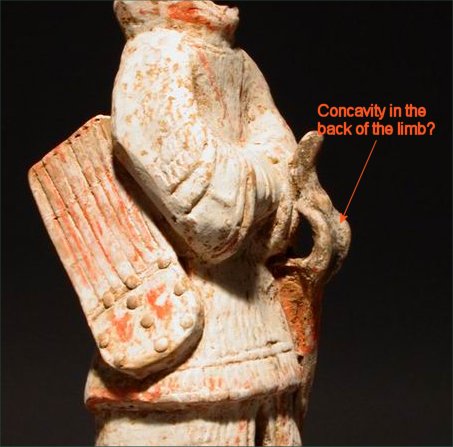
The quiver also brings immediately to mind the quivers used by the Manchus. It is compact and box-like, able to carry a large number of arrows gripped between two felt pads. The design can be clearly contrasted with the wooden back-quivers of the Han, and the closed quivers favoured by the following Tang dynasty.
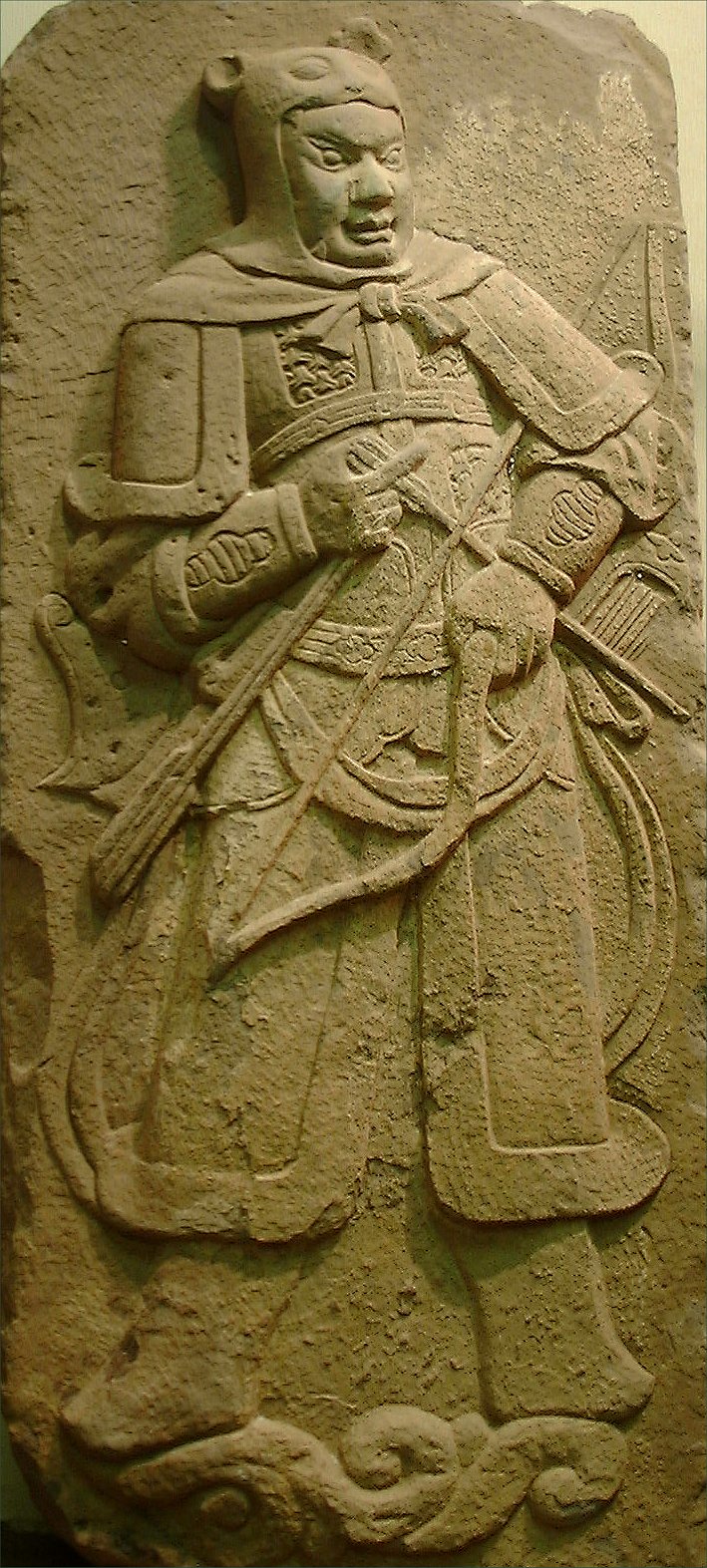
This gentleman is an archer from the Five Dynasties or Ten Kingdoms Period (907-979CE). He is carved on a tomb door panel from Shaanxi Province. His bow is not a typical Tang design. Behind his left elbow you can see the gaping fish's mouth of his bow case. At his right elbow is the top of a close quiver. We would expect to see the arrows with point upward, but in this carving, the fletching is clearly shown at the open top of the quiver.
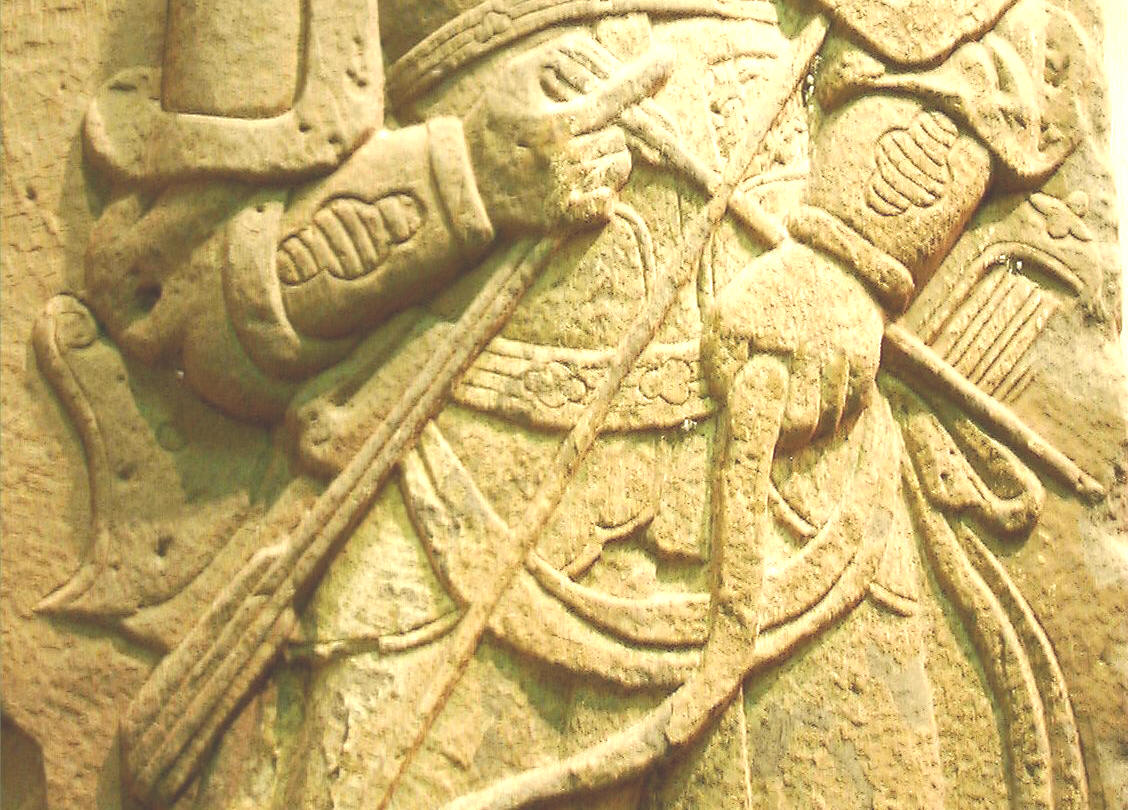
Here I have maxed out the contrast so that you can see the detail. The technique of holding two arrows in the draw-hand while nocking the third is reminiscent of some forms of kyudo today.
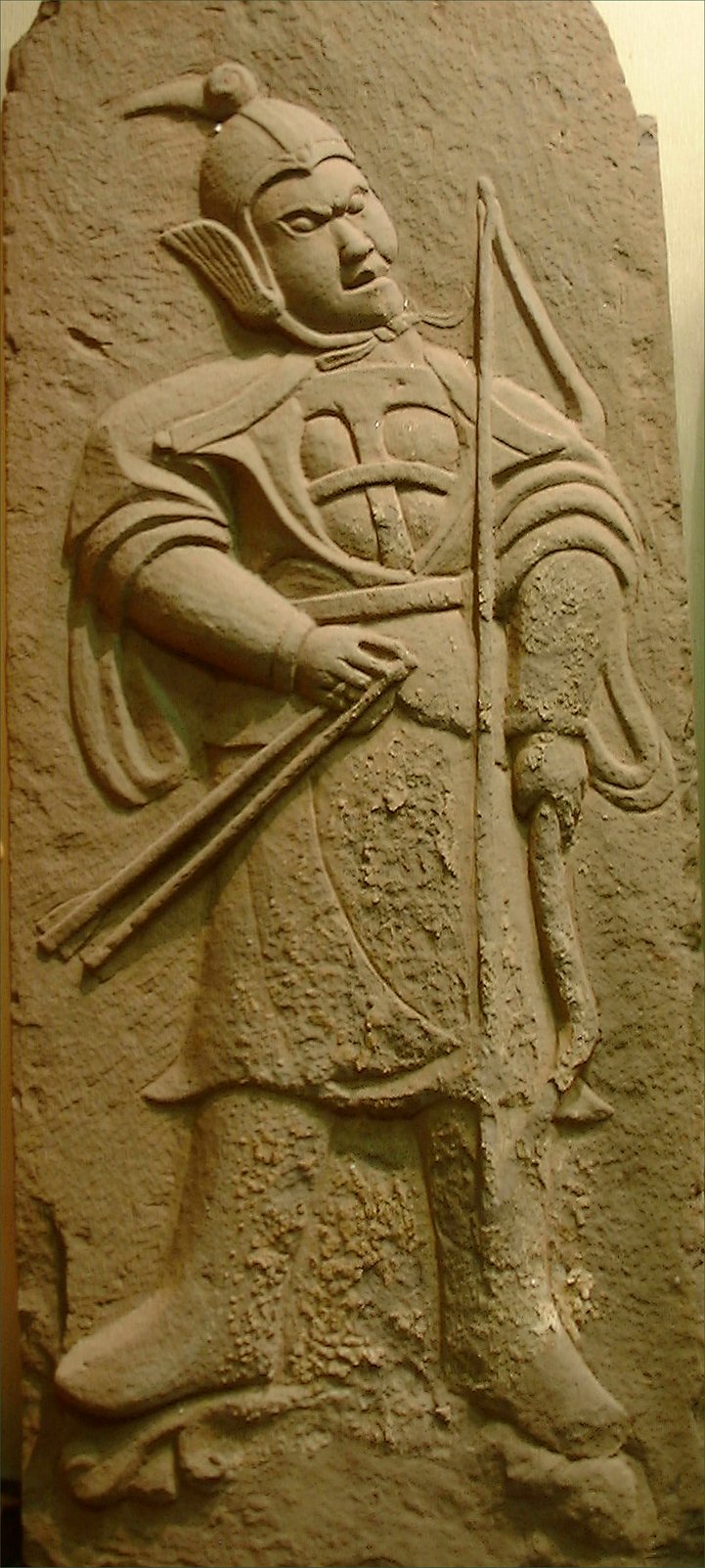
This archer dates from Northern Song Dynasty (960 – 1127). Both the Song panel and the previous one give the subject matter the same treatment, as both are tomb door panels to frighten away tomb raiders. (They failed.) The Song panel is more schematic and it would be difficult to say much about archery equipment or technique from looking at it.
|
|
(Signed) (Stephen Selby) |